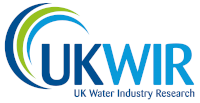The Chemical Investigations Programme Phase 2, 2015-2020 – Initial Findings
29/08/2017
The UKWIR Chemicals Investigation Programme (CIP) is the UK water Industry’s response to current and emerging legislation on trace substances in the water environment. It brings together the water and wastewater companies in England and Wales with the various regulators in a collaborative programme. The current phase, known as CIP2, is a substantial development of the initial phase of work, undertaken from 2010 to 2014, that sought to prioritise substances of potential concern and to determine the concentrations of such substances in wastewater. CIP2 is budgeted at £140 million. It comprises over three million determinations in the period 2015 to 2020, with sampling covering 74 substances at over 600 sewage treatment plants. Investigations of treatment processes and river catchment-wide assessments are included.
Substances of interest include metals, industrial chemicals such as fire retardants and biocides, hydrocarbons, pharmaceuticals, hormones and personal care products. The sewage treatment plants sites investigated have been chosen to represent the range of plants nationally, with a focus on locations where dilution of effluent in the receiving river is low and therefore where risk of elevated concentrations of substances of interest is highest. Samples of river water upstream and downstream of the plant discharge as well as samples of effluent have been analysed and the results compared with scientifically established water quality standards.
The initial findings of CIP2 are listed below.
- Current data confirm the earlier finding that the principal source of many trace contaminants is domestic. A small number of chemicals can be associated with trade or industrial applications, but household sources predominate for most of the substances prioritised as significant risks to compliance with water quality standards. Thus, with some relatively rare exceptions, there is considerable similarity between effluent quality at different wastewater treatment works and substances identified as problematic at one location are likely to be so at others. Hence the picture might be summarised as predominantly one of “problem substances” rather than “problem discharges”.
- The inclusion of in-river monitoring upstream and downstream of each WwTW discharge has shown that river quality is not solely determined by contaminant concentrations of the effluent in the immediate locality. This means that it should not be assumed that water quality upstream of a discharge has no bearing on downstream compliance. River quality upstream is often shown to be poor, such that the discharge itself makes little difference to downstream quality. This should lead to future control measures being directed to take account of the wider river catchment, rather than merely focusing on local issues.
- Approximately eight chemicals have been identified as posing the greatest risk, with the remainder being of little or no concern. These high-risk substances include several fire retardants that are used in household products and construction materials, an insecticide (that is relatively harmless to humans) and a group of substances that are generated by combustion processes. It appears that the presence this last group is not primarily associated with sewage effluents. It has also been shown that several of the above substances are so widely prevalent as to be considered ubiquitous. This has been considered in planning the response to ubiquitous substances, leading to the development of a national control strategy rather than a piecemeal site-by-site approach.
- Comparisons of data obtained currently with results from the first phase of the CIP provides evidence of reductions in concentrations of some substances, indicating the emerging success of control measures (such as restrictions on the use of substances and reformulation of household products) that have been put in place since 2010.
- It had already been established that the wastewater treatment process achieves substantial reductions in the concentrations of many substances. Often, however, even the residual concentrations can be high in relation to the stringent water quality standards that are now applied. CIP2 has examined several novel treatment techniques that can be used to supplement existing processes. The option of using these techniques more widely is under consideration, bearing in mind the cost and likely effectiveness of the different available approaches.
- Whilst pharmaceuticals are not at present regulated in surface waters, data from CIP2 suggest that as new legislation is developed, of the twenty compounds examined, some analgesics, antibiotics and steroid hormones (natural and synthetic) are of potential concern.
It is stressed that the conclusions summarised above represent an initial assessment of results from a programme that still has nearly three years to run. Hence they must be regarded as provisional inputs to the process of identifying pollution control measures that are necessary, worthwhile and justifiable.
It is also important to recognise that even a programme as large and ambitious as the CIP can only be expected to answer the questions for which it was originally designed. A number of unknowns that were outside the scope of CIP2 remain to be addressed. These include:
- Determination of the principal uses of chemicals that might lead to their becoming a threat to the water environment;
- Establishing the relative importance of the pathways by which contaminants might enter surface waters. The CIP has definitively described the contribution from sewage effluent and has illustrated the way in which sewage treatment acts as a barrier to substances entering surface waters. The part played by other pathways including, for example, agricultural and urban run-off, direct discharges to river, releases of untreated wastewater through storm overflows, remains relatively obscure; and,
- Assessment of the importance natural purification processes and whether or not sediments might constitute a reservoir of contamination that could delay recovery of surface water quality even if current discharges were eliminated. It is clear that some substances such as pharmaceuticals are maintained at present concentrations in rivers by the process of continuous supply. These would be expected to respond quickly to control measures, whilst other more inherently persistent substances might take longer to reduce in concentration.
